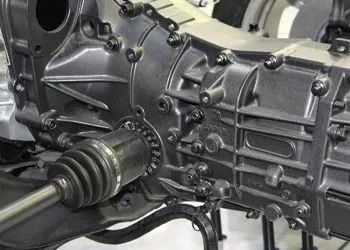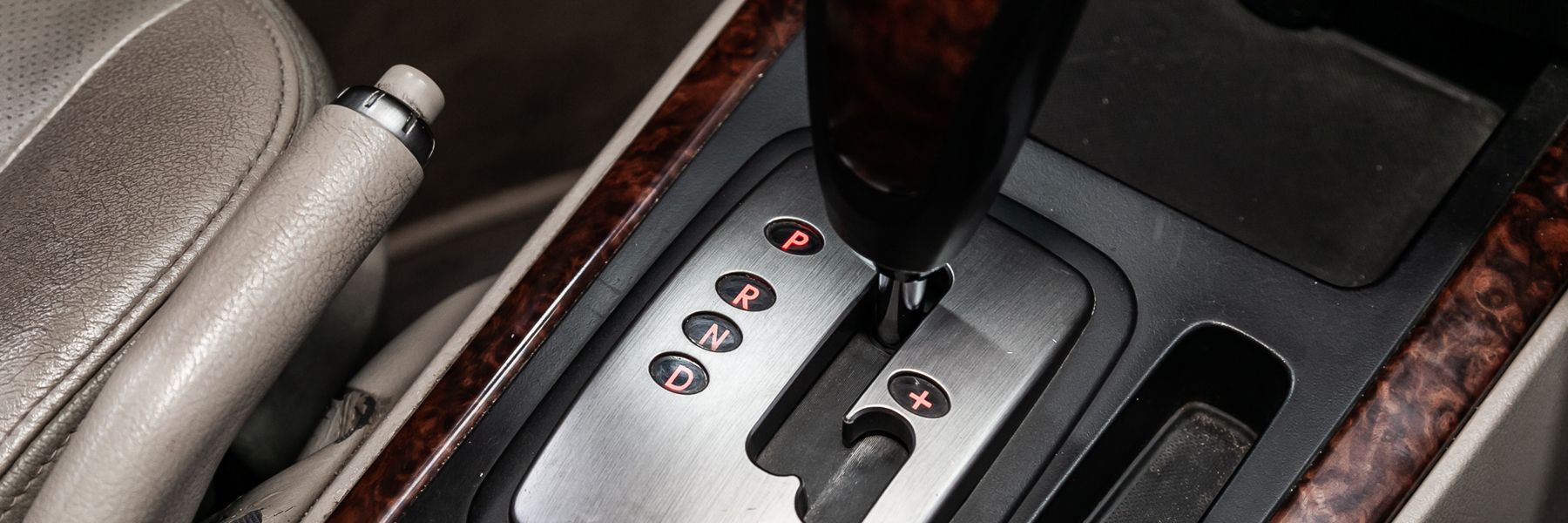Waterloo Transmissions Blog
Engaging blog posts covering Transmission Rebuild, Replace, Repair, Maintenance, and Differential, Drivetrain, & Clutch Services.

Your vehicle’s transmission plays a crucial role in keeping your car moving smoothly, and when something goes wrong, the symptoms often start small before becoming serious. Recognizing early warning signs can help you avoid costlier repairs. At Waterloo Transmissions, we can expertly diagnose and repair transmission problems. Here are four common signs that your transmission is in trouble. Unusual Noises While Shifting One of the first signs of transmission trouble often comes in the form of strange noises. If you start hearing grinding, whining, or clunking when your vehicle shifts gears, it may indicate worn internal components or low transmission fluid. These noises can happen during acceleration, deceleration, or even when the car is in neutral. Even if the sounds seem mild, they signal that something isn’t operating correctly. Ignoring these noises can lead to more severe internal damage, so it’s best to have them checked promptly. Slipping Gears While Driving A slipping transmission can be both frustrating and dangerous. If your vehicle seems to change gears unexpectedly or has trouble staying in gear, it’s a clear sign something is wrong. You may notice the engine revving higher than usual without a corresponding increase in speed, or the car may feel like it jolts in and out of gear. This type of issue often points to low fluid levels or internal wear. Because slipping can affect your ability to accelerate or maintain speed, it’s important to address this warning sign right away. Delayed or Rough Gear Engagement When you shift from park to drive or reverse, the transition should feel smooth and immediate. If there’s a noticeable delay or rough jump when engaging gears, your transmission may be struggling to circulate fluid or build enough pressure. This problem can stem from a failing pump, contaminated transmission fluid, or internal damage. Any delay or harsh engagement is a sign that your transmission is no longer operating efficiently and needs professional attention. Leaking Transmission Fluid If you spot reddish to brownish fluid under your vehicle, you may be dealing with a transmission fluid leak. This fluid is essential for cooling, lubricating, and powering your transmission. A leak can quickly lead to low fluid levels, which can cause severe internal damage if not corrected. Leaks often come from damaged seals, gaskets, or lines, and they should always be treated as urgent. Transmission Repair in Akron, OH For top-quality transmission repair in Akron, Canton, and Dover, OH , contact Waterloo Transmissions. Our local transmission mechanics can expertly address your vehicle’s transmission needs!

Your vehicle’s transmission is responsible for transferring power from the engine to the wheels and enabling smooth gear shifts while driving. When transmission problems arise, ignoring them can quickly turn a minor issue into a major repair. Acting fast when you notice warning signs—such as slipping gears, delayed shifting, or fluid leaks—can make all the difference in preserving your car’s performance and avoiding costly damage. At Waterloo Transmissions, we provide expert transmission repair in the greater Akron area. Here are four reasons why it’s essential to address signs of transmission trouble ASAP. Avoid Costly Repairs or Replacements Transmission repairs can be expensive, and full replacements are among the most costly repairs a car can require. However, catching and fixing problems early—such as fluid leaks or worn-out seals—can often prevent the need for a rebuild or replacement. Regular inspections and prompt attention to any warning signs can keep repair costs minimal and your transmission operating efficiently for years to come. Promotes Safe and Reliable Driving A faulty transmission can make your car unpredictable and unsafe to drive. Slipping gears or hesitation when accelerating can cause your vehicle to lose power at critical moments, especially when merging onto highways or crossing intersections. Addressing transmission trouble promptly helps maintain the vehicle’s stability, ensuring smoother gear transitions and consistent power delivery. Safe driving depends on a responsive, reliable transmission that you can count on in all conditions. Protects the Transmission Fluid System Transmission fluid plays a vital role in lubricating gears, cooling internal parts, and maintaining hydraulic pressure. When this fluid becomes dirty or starts leaking, the system’s ability to function properly is compromised. Low or contaminated fluid can quickly lead to overheating and internal wear. Taking care of transmission issues early helps protect the fluid system, preventing severe internal damage that could otherwise require a full rebuild. Maintains Vehicle Longevity and Value A well-maintained transmission significantly extends the life of your vehicle. When you stay proactive about addressing transmission trouble, you’re preserving the overall health of the drivetrain and keeping your car running efficiently. Vehicles with strong, well-functioning transmissions also hold greater resale value, as potential buyers know they’re less likely to face major mechanical problems down the road. Transmission Repair in Akron, OH For top-quality transmission repair in Akron , Canton, and Dover, OH, contact Waterloo Transmissions. Our local transmission mechanics can expertly address your vehicle’s transmission needs!

Your vehicle’s transmission is one of its most critical components, responsible for transferring power from the engine to the wheels. Because of its importance and complexity, transmission repairs can become quite extensive. The good news is that with proper care and attention, you can help extend the life of your transmission and avoid major headaches down the road. Here are four tips to help keep your transmission in great shape for years to come. Stay Current with Fluid Changes Transmission fluid is the lifeblood of the system, keeping it cool and lubricated. Over time, fluid breaks down, collects debris, and loses its effectiveness. Regular fluid checks and timely changes are essential for maintaining smooth operation and preventing internal damage. If the fluid looks dark or has a burnt smell, it’s time for service. Keeping the fluid fresh helps reduce wear and enables your transmission to operate at its best. Avoid Overloading Your Vehicle Every vehicle has its weight limits. Consistently carrying more than your vehicle is designed for can lead to overheating and premature wear of transmission components. Whether you’re towing a trailer or hauling heavy cargo, staying within the recommended limits will go a long way toward protecting your transmission. Don’t Shift Between Drive and Reverse While Moving Shifting abruptly from drive to reverse, or vice versa, while the vehicle is still rolling is a common but damaging habit. This action forces the transmission to stop the vehicle’s momentum suddenly, which puts excessive strain on the gears and internal parts. Always come to a complete stop before changing gears to prevent unnecessary wear. Get to the Shop if You Notice Signs of Trouble Transmissions often give warning signs before they fail completely. Hesitation when shifting, slipping gears, unusual noises, or fluid leaks are all red flags that something may be wrong. Ignoring these issues can turn a minor repair into a major replacement. Getting to the shop at the first sign of trouble gives you the best chance of addressing problems early and keeping costs manageable. Transmission Service in Akron, OH For top-quality transmission service in Akron, Canton, and Dover, OH, contact Waterloo Transmissions. Our nearby transmission mechanics can expertly address your vehicle’s transmission needs in Akron and the surrounding area!

Your vehicle’s transmission plays a vital role in keeping your car moving smoothly, and transmission fluid is the lifeblood that keeps everything operating properly. When there’s a leak, the transmission can quickly become compromised, leading to costly repairs or even complete failure. Because the transmission is such a critical and expensive component, it’s important to know the warning signs of a fluid leak so you can address the problem before it gets worse. At Waterloo Transmissions, we provide expert transmission fluid leak repair in the greater Akron area. Here are four signs that your car may need transmission fluid leak repair. Visible Fluid Under Your Car One of the most obvious signs of a transmission fluid leak is spotting reddish liquid under your vehicle after it’s been parked. Transmission fluid is commonly bright red when newer, but may turn more brownish as it ages. If you notice puddles or spots, it’s time to have your transmission inspected by a professional. Low or Dropping Fluid Levels Checking your transmission fluid regularly is a smart habit, and if you notice the fluid level dropping quickly, it often points to a leak. Even small leaks can cause the fluid to drain over time, leaving the transmission without the lubrication it needs. Running a transmission with low fluid can cause overheating and serious internal damage. Slipping Gears A transmission that isn’t getting enough fluid may begin to slip while driving. This happens when there isn’t enough hydraulic pressure for the transmission to stay properly engaged in a gear. If your car feels like it’s shifting unexpectedly or struggling to stay in gear, it could be due to fluid loss from a leak. Delayed or Rough Shifting Another common symptom of a transmission fluid leak is experiencing rough, jerky, or delayed gear changes. Transmission fluid not only provides lubrication, but also helps create the pressure needed for smooth shifts. If the fluid is leaking, your vehicle may start to hesitate before changing gears or lurch between shifts, signaling the need for immediate attention. Transmission Repair in Akron, OH For top-quality transmission repair in Akron, Canton, and Dover, OH , contact Waterloo Transmissions . Our nearby transmission mechanics can expertly address your vehicle’s transmission needs in greater Akron!

Your car’s automatic transmission plays a critical role in delivering power from the engine to the wheels, enabling smooth gear changes and overall drivability. When transmission issues arise, they often start small but can quickly escalate into major repairs if left unaddressed. That’s why it’s important to recognize the early warning signs of trouble and get your vehicle to a trusted mechanic before further damage occurs. At Waterloo Transmissions, we provide expert automatic transmission repair in the greater Akron, OH area. Here’s a look at four common automatic transmission problems that should be checked out by a professional right away. Gear Slippage If your car seems to change gears unexpectedly or struggles to stay in gear, it’s likely experiencing gear slippage. This can happen when the transmission fluid is low or degraded, or when there’s internal wear within the system. Gear slippage not only affects your car’s performance but also poses a serious safety risk, especially when accelerating or merging onto highways. Delayed or Harsh Shifting A properly functioning automatic transmission should shift gears smoothly and promptly. If you notice a delay when shifting into drive or reverse, or if the shifts feel rough or jarring, it could indicate a mechanical or hydraulic problem. These problems often worsen over time, so it’s best to have a technician conduct an inspection as soon as possible. Transmission Fluid Leaks Automatic transmissions rely on fluid to lubricate components and maintain proper hydraulic pressure. If you spot reddish fluid under your car, there may be a leak from the pan gasket, seals, or transmission lines. Fluid loss can lead to overheating and internal damage, potentially requiring a complete transmission overhaul. A mechanic can pinpoint the source of the leak and repair it before more serious damage occurs. Unusual Noises While Driving Strange noises like whining, grinding, or buzzing while the car is in gear are strong indications of transmission trouble. These sounds may result from issues like worn bearings or insufficient fluid levels. Any unusual noise should be inspected by a mechanic to avoid a breakdown. Automatic Transmission Repair in Akron, OH For top-quality transmission repair in Akron, Canton, and Dover, OH , contact Waterloo Transmissions. Our nearby transmission mechanics can expertly address your vehicle’s transmission needs!



